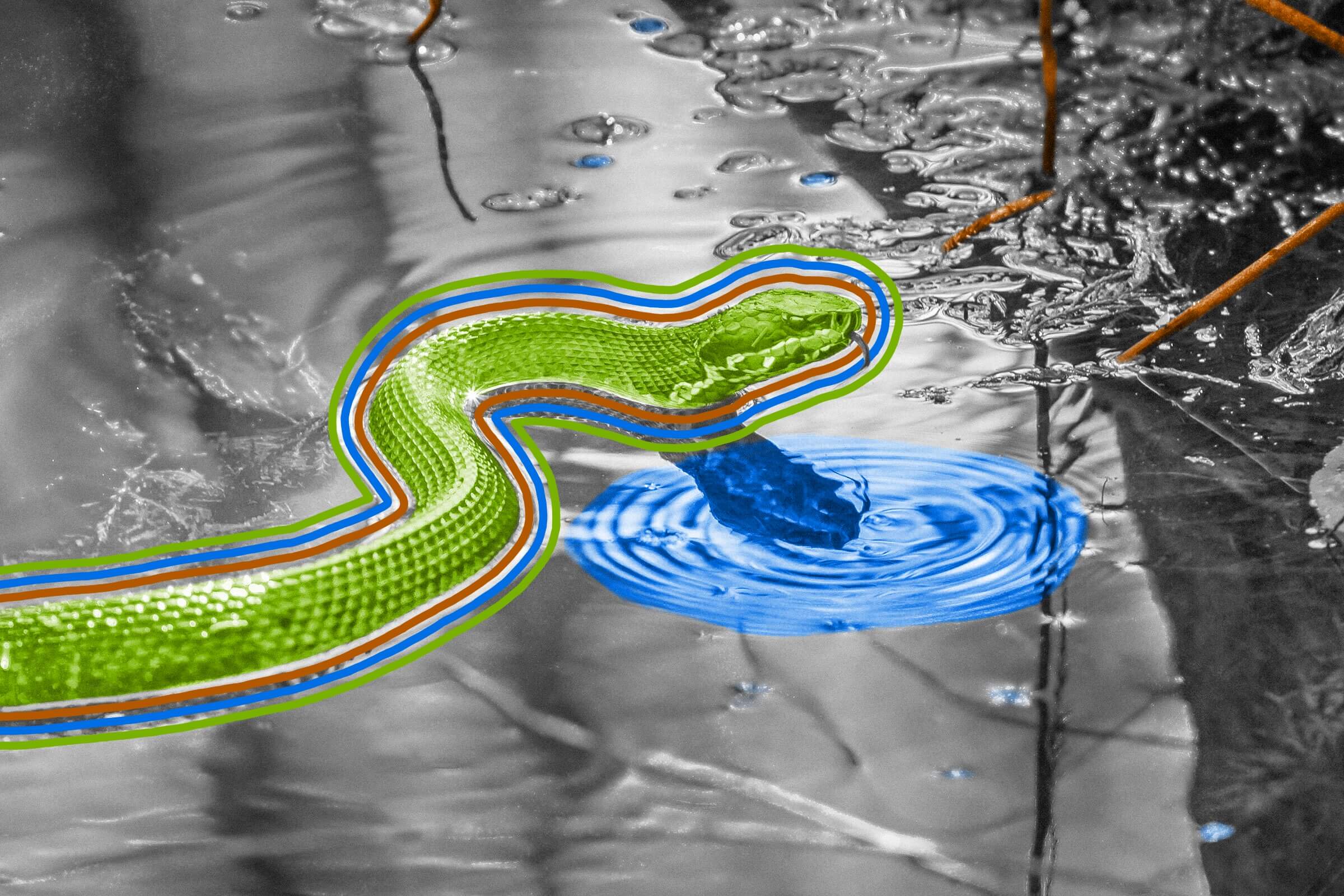| Snakes are often pictured curled around a tree in a dense jungle or hiding in a desert waiting to strike some unsuspecting prey. But they're just as capable in the water as they are on land — in fact, all species of snakes can swim. In North America, a famous example is the cottonmouth (Agkistrodon piscivorus), named for the white color on its mouth that goes on full display when the creature is angry. This snake, native to the southeastern U.S., also goes by the name "water moccasin" because of its predilection for estuaries, bays, and rivers. But even going a step beyond the familiar cottonmouth, some 60 species of marine snakes derived from the cobra family call the ocean their home, and monstrously large snakes such as anacondas also spend most of their life in the water. Even snakes that generally have no business in water, such as the desert-loving rattlesnake, can swim in a pinch. Members of the suborder Serpentes (to which all snakes belong) are such good swimmers because their elongated bodies can easily propel them through the water, and some have even evolved tails that look like paddles. But don't worry, ophidiophobes: It's not like the Earth's waters are teeming with snakes. Snakes can't live in areas that are too cold, and many spots — Alaska, New Zealand, and Ireland, to name a few — are entirely free of them. | 







No comments:
Post a Comment